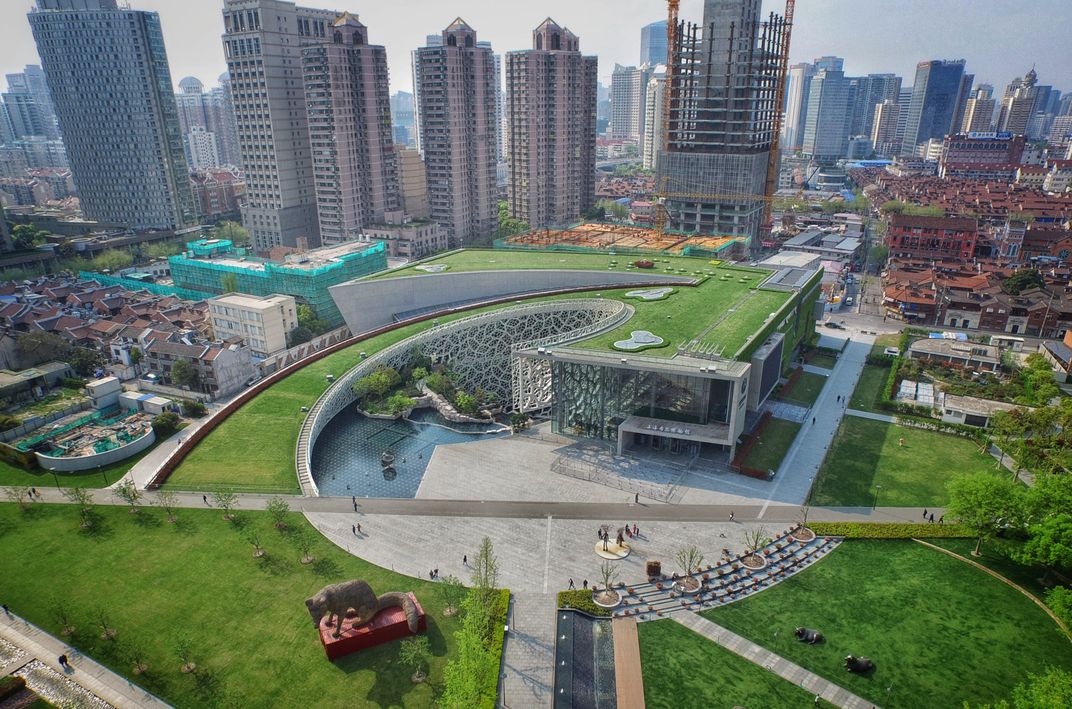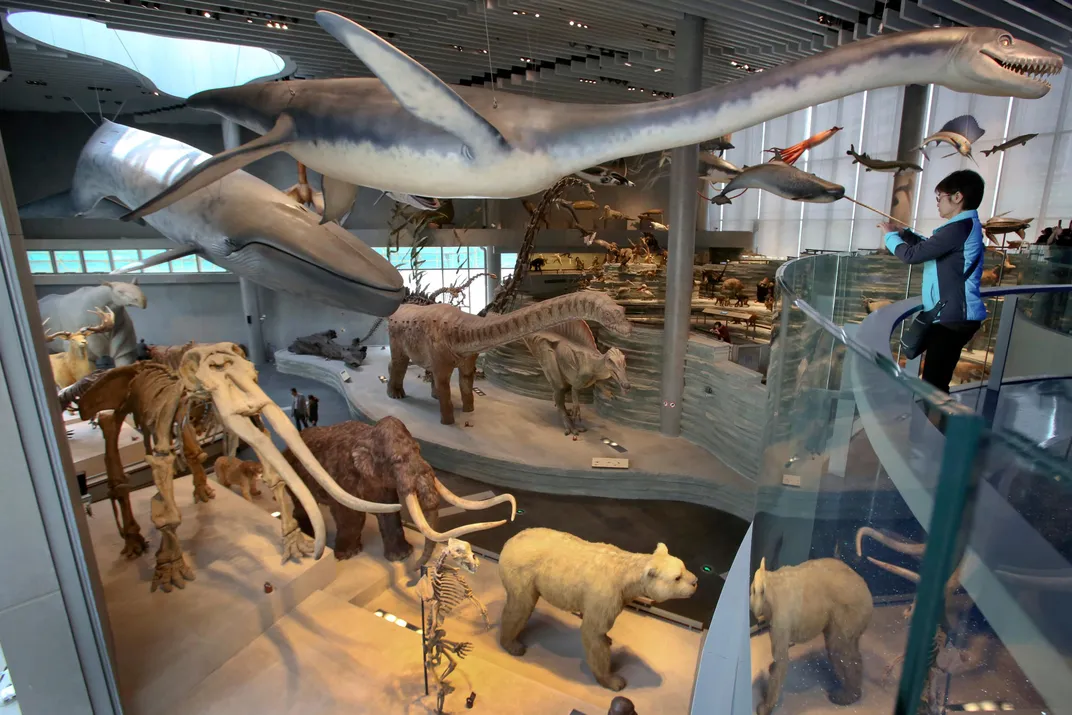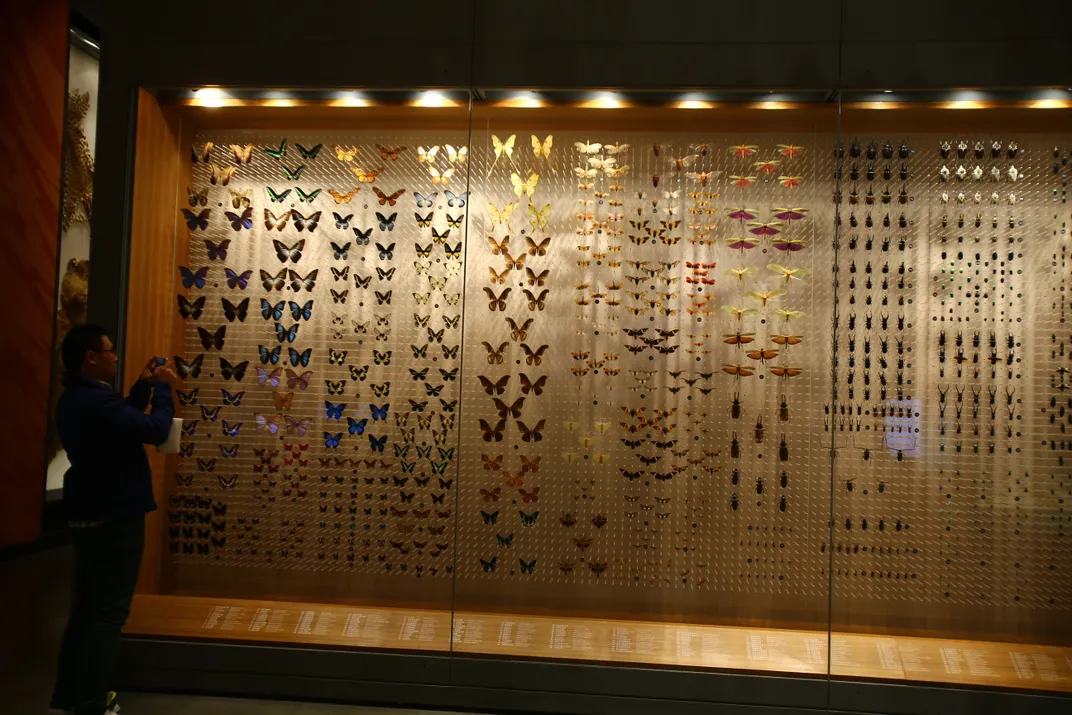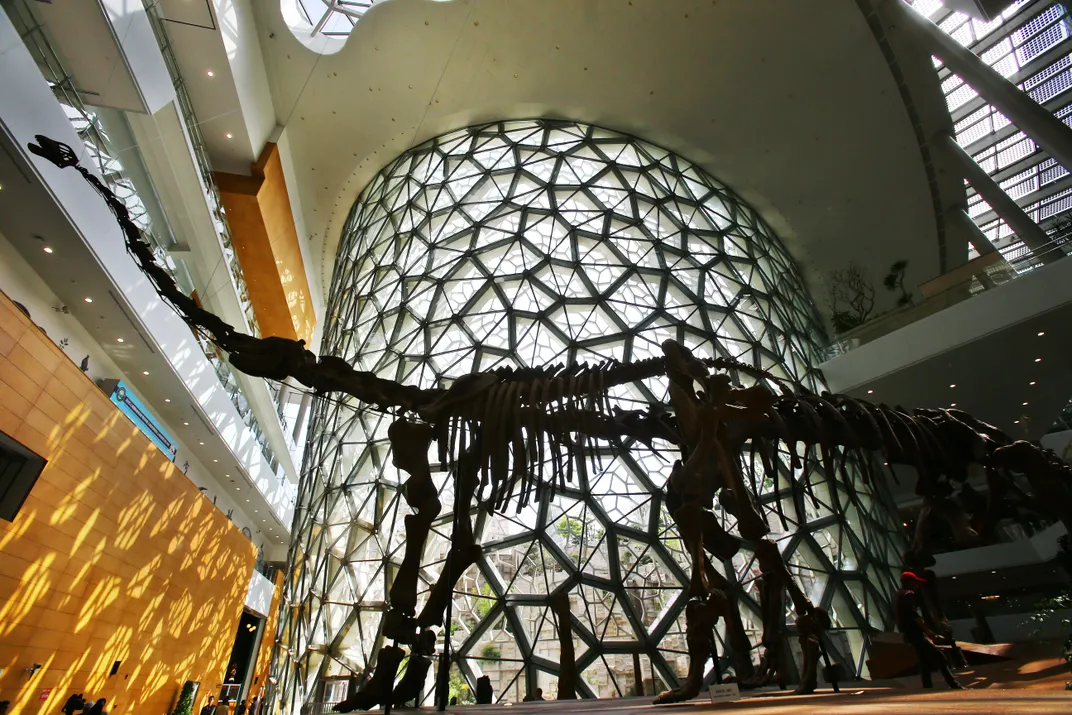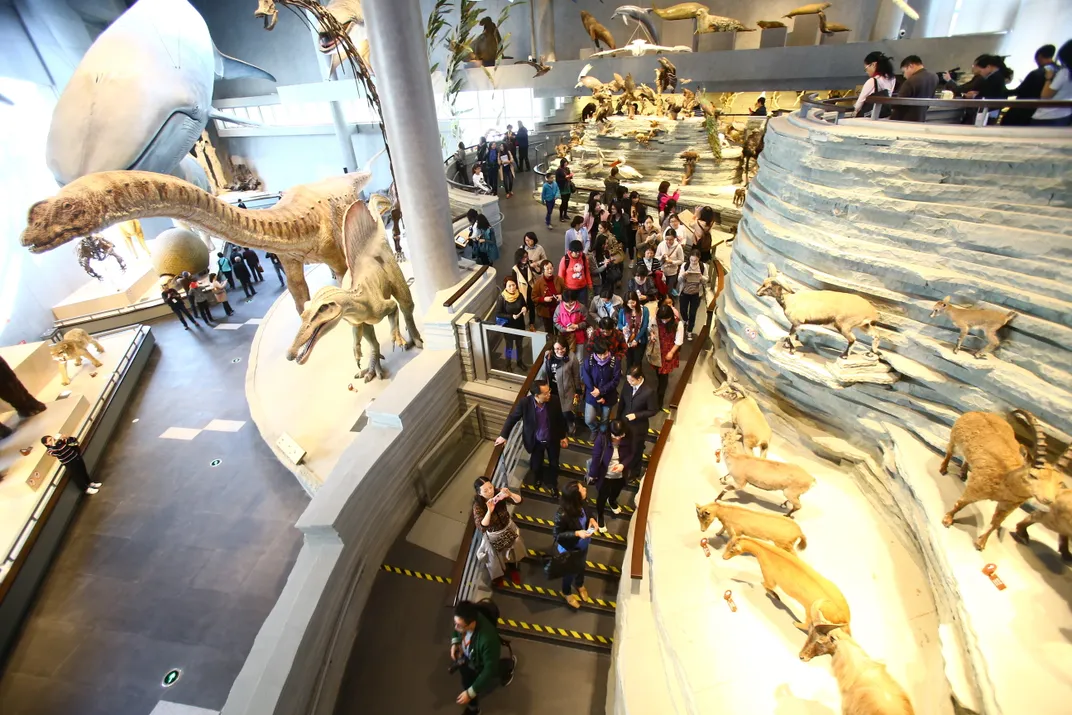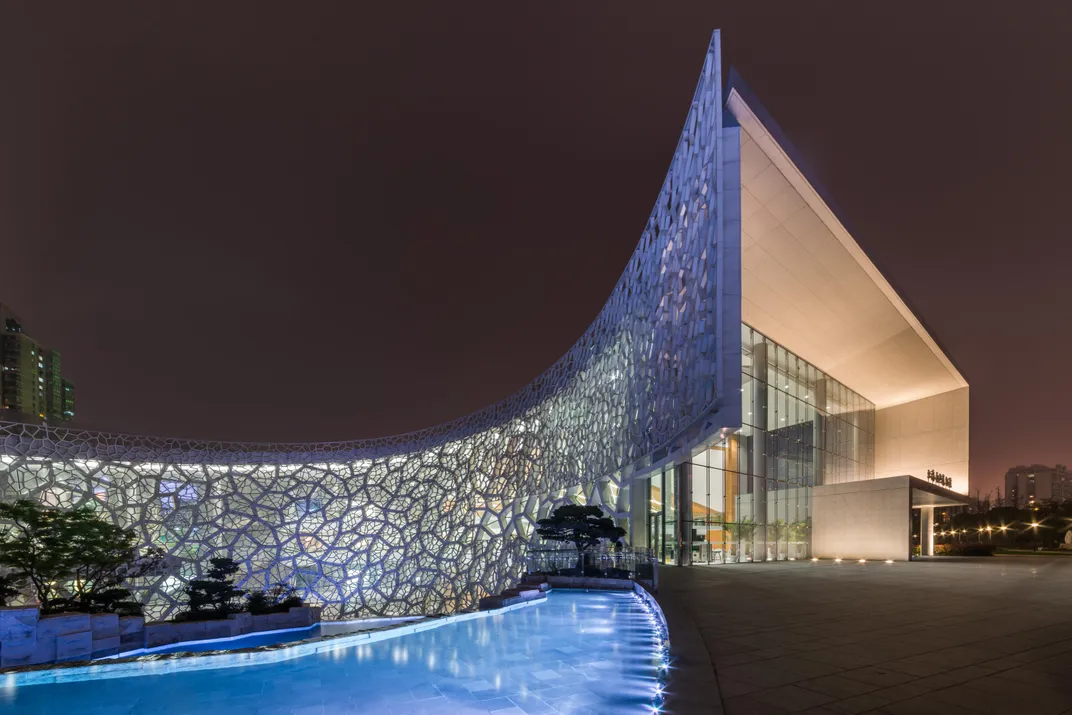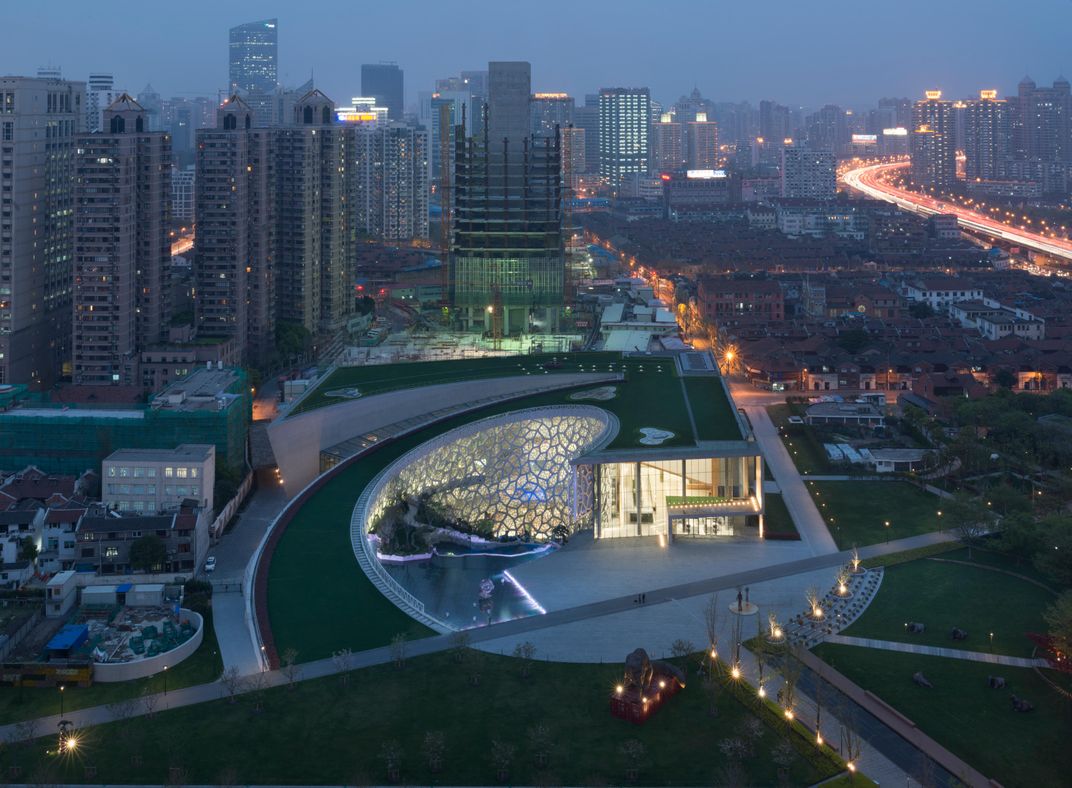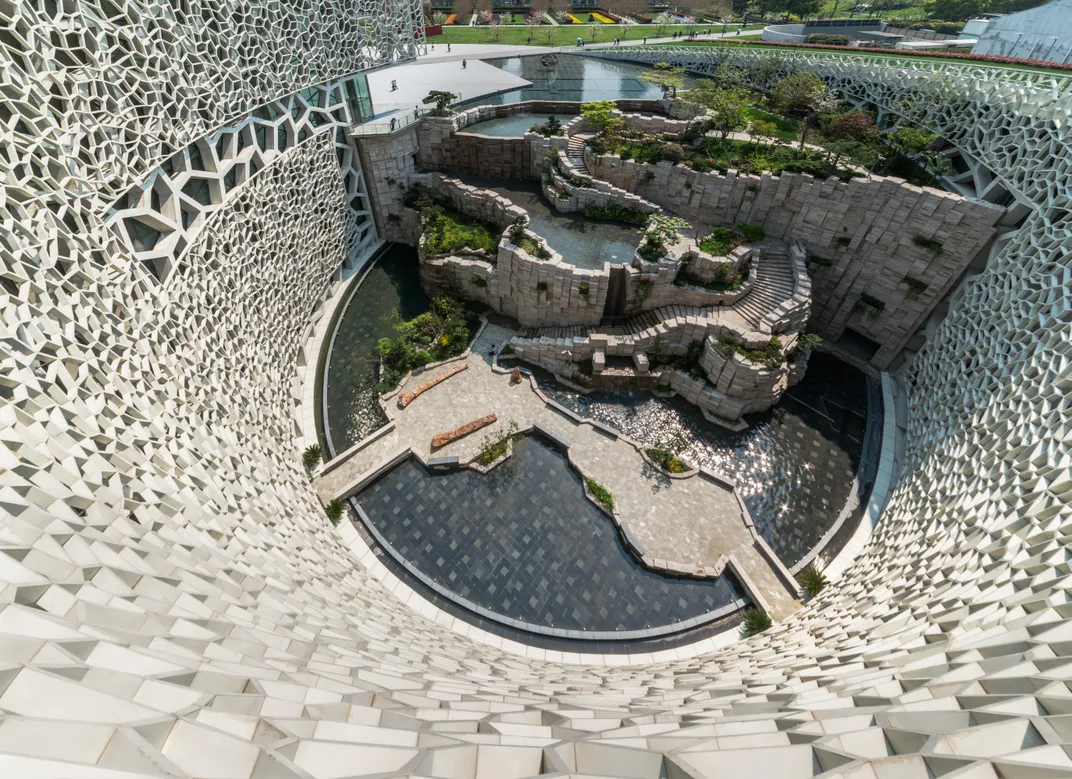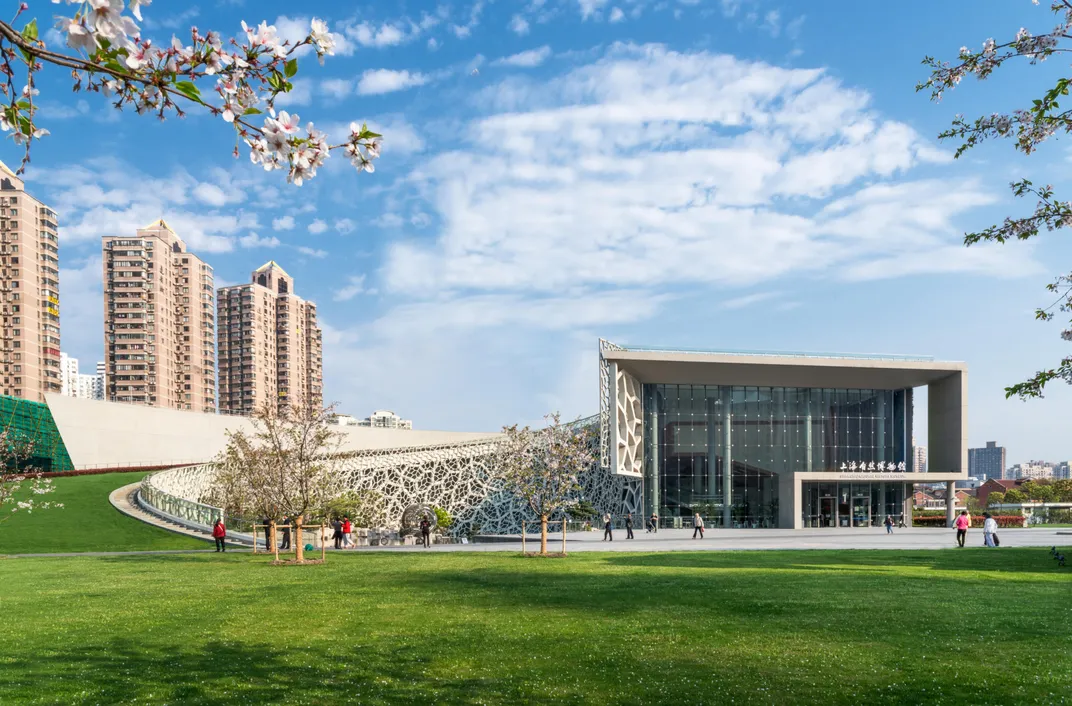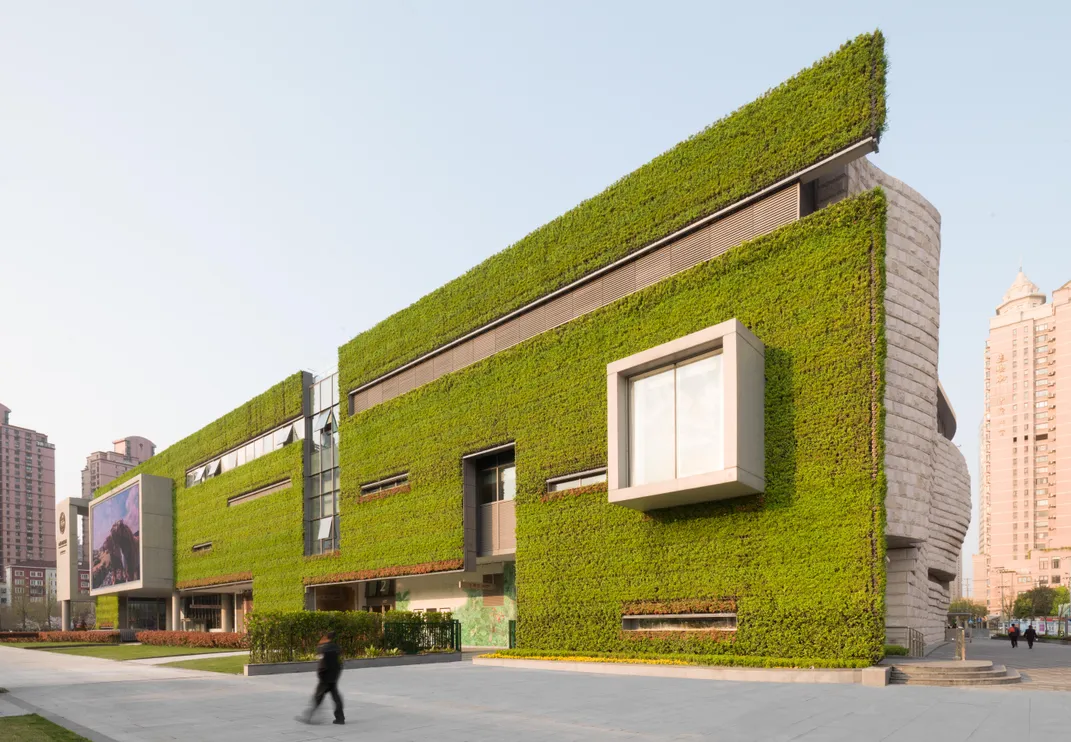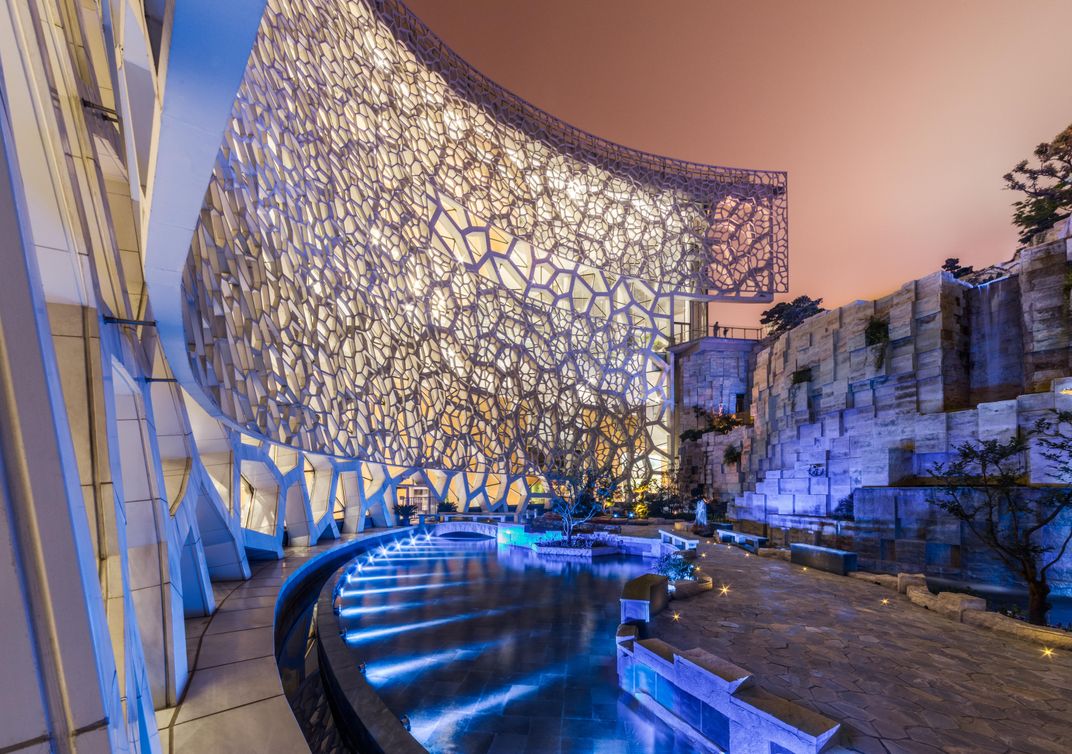The New Shanghai Natural History Museum is Ancient, Modern and Uniquely Chinese
The nautilus-shaped building draws on Chinese traditions and 21st century design to house amazing specimens found nowhere else
The new Shanghai Natural History Museum is not your grandparents’ museum. Gone are the blocky, musty, function-over-form buildings of yore; in are nautilus-shaped, bioclimatic buildings that serve as their own exhibits.
Located in the middle of China’s largest city and within Jing'an Sculpture Park, the natural history museum holds 10,000 artifacts from all seven continents, but its most noteworthy object may be the building itself. Replacing the old Shanghai Natural History Museum (which opened in the 1950s), the new museum takes its shape from the nautilus shell—“one of the purest geometric forms found in nature,” notes Chicago-based architecture firm Perkins+Will.
“[This museum] is really a microcosm of the symbolism of the harmony between man and nature,” says Ralph Johnson, the designer of the new museum and global design director for Perkins+Will. It took nine years of development, design and construction, but the facility was finally brought to life when it opened to the public on April 19.
The museum is also uniquely Chinese: The landscaping and design take direct inspiration from the ancient Chinese tradition of mountain water gardens, which seeks to recreate the natural landscape of China in miniature. Johnson also notes the need to design for the heavy traffic a Chinese museum will receive. Comparing it to another design of his, the O’Hare International Terminal in Chicago, Johnson sees the difference: “In China, there has to be large circular places because of the density of people. It is a different kind of path [as opposed to American buildings]. It isn’t just about seeing exhibits, but also about movement through space, the need for transition.”
One of the new museum's most striking features is the 109-foot cell wall on the north side of the building, designed to mimic the cellular structure of plants and animals. While aesthetically pleasing from the outside, the wall also has a practical purpose—it is the main light source for the building’s interior and casts cell-shaped shadows upon visitors. “It’s a three-layer wall. The shape is very complex because it is circular and conical. And then when you apply that pattern onto a circle, it was a big challenge to design ... but it is thing that unites the exterior with the interior,” says Johnson.
Many other features of the building, including its roof and all four external walls, connect to the museum's inherent purpose as a learning center. On the north side, running alongside the cell wall, is an architectural design made of stone that shows shifting tectonic plates and canyon walls eroded by time and water. On the east side is the growing green wall, embedded with real grass and vegetation. The south side of the building is the cell wall, glazed to “maximize daylight and minimize solar gain.” The roof features a garden accessible to visitors and a courtyard pond that also acts a rainwater collection system.
While the new building is certainly a site to see, it isn’t the only thing that brought in over 10,000 visitors on opening day. The museum also boasts a 140-million-year-old, complete skeleton of the dinosaur Mamenchisaurus, roaring interactive dinosaurs, a 4D theater, specimens of animals that can’t be found outside of China (such as the Yangtze Alligator, pandas and giant salamanders), and hands-on ocean life exhibit tanks (a few issues have surfaced with those, however). Johnson says, “I think it is a fantastic natural history museum. One can learn about natural history in a global sense, but it is specifically oriented to China, which can’t be gotten anywhere else. It really is geared to tying Chinese natural history to global ideas of sustainability and the natural environment.”
Planning Your Next Trip?
Explore great travel deals
Smithsonian magazine participates in affiliate link advertising programs. If you purchase an item through these links, we receive a commission.
